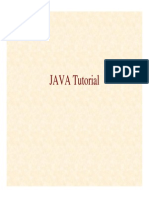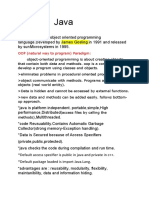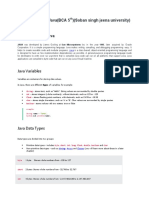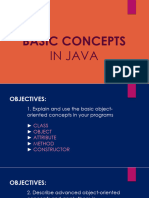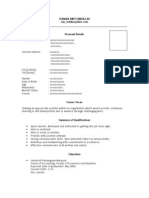0% found this document useful (0 votes)
118 views13 pagesJava
Java is an object-oriented programming language that is designed to be portable, platform independent, robust, and secure. Its key features include being simple, object-oriented, portable, platform independent, secured, robust, architecture neutral, interpreted, high performance, multithreaded, distributed, and dynamic. Java uses objects, classes, inheritance, polymorphism, abstraction, and encapsulation as its basic concepts of object-oriented programming. An object has a state, behavior, and identity while a class defines common properties and methods for objects of that type. Inheritance allows one class to acquire the properties of another class and polymorphism allows one action to be performed in different ways.
Uploaded by
sandeepraskar8763Copyright
© © All Rights Reserved
We take content rights seriously. If you suspect this is your content, claim it here.
Available Formats
Download as PPTX, PDF, TXT or read online on Scribd
0% found this document useful (0 votes)
118 views13 pagesJava
Java is an object-oriented programming language that is designed to be portable, platform independent, robust, and secure. Its key features include being simple, object-oriented, portable, platform independent, secured, robust, architecture neutral, interpreted, high performance, multithreaded, distributed, and dynamic. Java uses objects, classes, inheritance, polymorphism, abstraction, and encapsulation as its basic concepts of object-oriented programming. An object has a state, behavior, and identity while a class defines common properties and methods for objects of that type. Inheritance allows one class to acquire the properties of another class and polymorphism allows one action to be performed in different ways.
Uploaded by
sandeepraskar8763Copyright
© © All Rights Reserved
We take content rights seriously. If you suspect this is your content, claim it here.
Available Formats
Download as PPTX, PDF, TXT or read online on Scribd
/ 13



